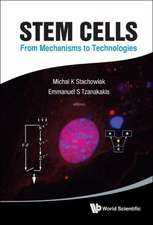Atomistic Simulation of Materials: Beyond Pair Potentials
Editat de David J. Srolovitz, V. Viteken Limba Engleză Paperback – 19 mar 2012
Preț: 405.48 lei
Nou
Puncte Express: 608
Preț estimativ în valută:
77.58€ • 81.01$ • 64.07£
77.58€ • 81.01$ • 64.07£
Carte tipărită la comandă
Livrare economică 15-29 aprilie
Preluare comenzi: 021 569.72.76
Specificații
ISBN-13: 9781468457056
ISBN-10: 1468457055
Pagini: 480
Ilustrații: 480 p.
Dimensiuni: 178 x 254 x 25 mm
Greutate: 0.83 kg
Ediția:Softcover reprint of the original 1st ed. 1989
Editura: Springer Us
Colecția Springer
Locul publicării:New York, NY, United States
ISBN-10: 1468457055
Pagini: 480
Ilustrații: 480 p.
Dimensiuni: 178 x 254 x 25 mm
Greutate: 0.83 kg
Ediția:Softcover reprint of the original 1st ed. 1989
Editura: Springer Us
Colecția Springer
Locul publicării:New York, NY, United States
Public țintă
ResearchCuprins
Total Energy and Force Calculations with the LMTO Method.- Concentration Dependent Effective Cluster Interactions in Substitutional Alloys.- Simulation of Isovalent Impurities in Magnesium Oxide Using Hartree-Fock Clusters.- Defect Abundances and Diffusion Mechanics in Diamond, SiC, Si and Ge.- A Computational Metallurgical Approach to the Electronic Properties and Structural Stability of Intermetallic Compounds.- Theory of Defects in Solids and their Interactions.- The Atomistic Structure of Silicon Clusters and Crystals: From the Finite to the Infinite.- Applications of Simulated Annealing in Electronic Structure Studies of Metallic Clusters.- Ab-Initio Molecular Dynamics Simulation of Alkali-Metal Microclusters.- A Simplified First Principles Tight-binding Method for Molecular Dynamics Simulations and Other Applications.- Angular Forces in Transition Metals and Diamond Structure Semiconductors.- Pseudopotential Studies of Structural Properties for Transition Metals.- Calculation of Ground- and Excited-State Properties of Solids, Surfaces and Interfaces: Beyond Density Functional Formalism.- Molecular Dynamics Simulation of the Physics of Thin Film Growth on Si: Effects of the Properties of Interatomic Potential Models.- Self-Consistent Cluster-Lattice Simulation of Impurities in Ionic Crystals.- The Effective Medium Approach to the Energetics of Metallic Compounds.- Ab-Initio Study of Amorphous and Liquid Carbon.- Modelling of Inorganic Crystals and Glasses Using Many-Body Potentials.- Embedded Atom Method: Many-Atom Description of Metallic Cohesion.- Application of Many-Body Potentials Noble Metal Alloys.- Many-Body Potentials for Hexagonal Close-Packed Metals.- Derivation of Embedding Functions to Reproduce Elastic and Vibrational Qualities of FCC and BCC Metals.-An Embedded Atom Potential for BCC Iron.- Effects of Boron and Sulfur on Ni3Al Grain Boundaries.- Embedded Atom Method Model for Close-Packed Metals.- Boundary Conditions for Quantum Clusters Embedded in Classical Ionic Crystals.- Physical Properties of Grain-Boundary Materials: Comparison of EAM and Central-Force Potentials.- Temperature Dependence of Interatomic Forces.- New, Simple Approach to Defect Energies in Solids via Equivalent Crystals.- Grain-Boundary and Free-Surface Induced Thermodynamic Melting: A Molecular Dynamics Study in Silicon.- Interatomic Potentials and the Bonding Energetics of Polytetrahedral Packing in Transition Metals.- Transferability of Tight-Binding Matrix Elements.- The Tight-Binding Bond Model.- Interatomic Forces and Bond Energies in the Tight-Binding Approximation.- A New Interatomic Potential for Non-Metals.- Transferable Tight-Binding Models Direct from Density Functional Theory.- Stability of the (110) Face in Noble Metals Analyzed within a Tight-Binding Scheme.- Application of the Tight-Binding Bond Model.- Interatomic Forces from the Recursion Method with Gaussian Pseudopotentials.- Application of Tight-Binding Recursion Methods to Lattice Defects in Metals and Alloys.- Atomic Simulation of Superdislocation Dissociation in Ni3Al.- A New Method for Coupled Elastic-Atomistic Modelling.- Self-Diffusion and Impurity Diffusion of FCC Metals Using the Embedded Atom Method.- Simulations of Atomic and Molecular Processes at Solid Surfaces.- Molecular Dynamics Simulations of Materials: Beyond Pair Interactions.- On some Spectacular Surface Segregation Behaviors in CuNi and PtNi Alloys Analyzed within the Tight-Binding Model.













